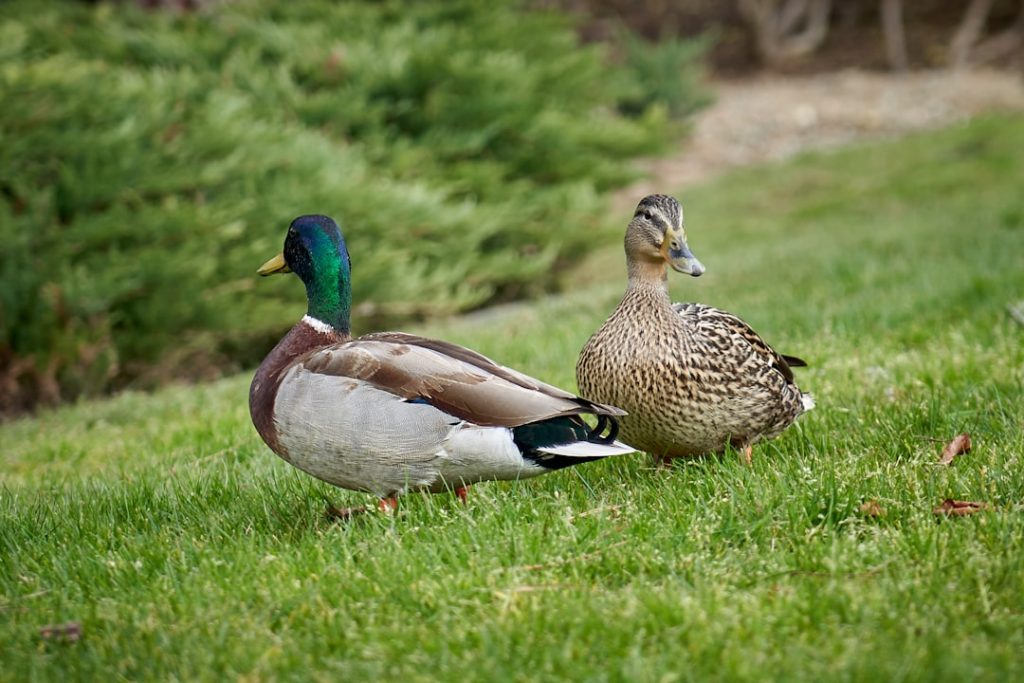Meat duck breeds are specifically bred for their high-quality meat production. These ducks are known for their fast growth, efficient feed conversion, and flavorful meat. They are a popular choice for farmers and homesteaders looking to raise their own meat. Meat duck breeds are also commonly raised in commercial operations due to their high meat yield and relatively low maintenance requirements. These ducks are a great addition to any farm or homestead, providing a sustainable source of meat for the family or for sale.
Meat duck breeds come in a variety of sizes and colors, with each breed having its own unique characteristics and advantages. Whether you are looking to raise ducks for personal consumption or for commercial purposes, there is a meat duck breed that will suit your needs. In this article, we will explore the characteristics of meat duck breeds, popular breeds for meat production, breeding and raising practices, nutritional value, challenges in raising meat duck breeds, and the future of meat duck breeds in agriculture.
Table of Contents
Key Takeaways
- Meat duck breeds are specifically bred for their high meat production and are popular among farmers for their fast growth and high feed conversion ratio.
- Meat duck breeds are known for their large body size, fast growth rate, and high meat yield, making them a popular choice for meat production.
- Popular meat duck breeds include the Pekin, Muscovy, and Moulard, each with their own unique characteristics and advantages for meat production.
- Breeding and raising meat duck breeds require proper housing, feeding, and management practices to ensure optimal growth and meat quality.
- Meat duck meat is known for its high protein content, low fat levels, and rich flavor, making it a popular choice for culinary purposes.
Characteristics of Meat Duck Breeds
Meat duck breeds are known for their rapid growth and efficient feed conversion, making them an ideal choice for meat production. These ducks have a large body size and a high meat-to-bone ratio, resulting in a higher yield of meat compared to other poultry species. They also have a thick layer of fat under their skin, which contributes to the rich flavor and succulence of their meat. Meat duck breeds are generally hardy and adaptable to various climates, making them suitable for raising in different regions.
In addition to their meat production capabilities, meat duck breeds are also valued for their calm and docile temperament, making them easy to handle and manage. They are also known for their strong maternal instincts, making them good brooders and mothers. Meat duck breeds are generally good foragers and can thrive on pasture-based systems, reducing the need for expensive feed inputs. Overall, meat duck breeds are a practical and sustainable choice for meat production on small farms and homesteads.
Popular Meat Duck Breeds
There are several popular meat duck breeds that are commonly raised for their meat production capabilities. One of the most well-known meat duck breeds is the Pekin duck, which originated in China and has become a popular choice for commercial meat production due to its fast growth rate and high meat yield. The Pekin duck has a white plumage and a large body size, making it an attractive option for farmers looking to raise ducks for meat.
Another popular meat duck breed is the Muscovy duck, which is known for its lean and flavorful meat. Muscovy ducks have a distinct appearance with red wattles around their eyes and a unique quack. They are also valued for their ability to fly, making them good foragers and less reliant on commercial feed. Muscovy ducks are a popular choice for homesteaders looking to raise ducks for meat and eggs.
Other popular meat duck breeds include the Khaki Campbell, Rouen, and Aylesbury ducks, each with its own unique characteristics and advantages for meat production. These breeds come in a variety of colors and sizes, providing options for farmers and homesteaders with different preferences and production goals.
Breeding and Raising Meat Duck Breeds
Breeding and raising meat duck breeds requires careful consideration of housing, nutrition, and management practices to ensure optimal growth and meat quality. When selecting breeding stock, it is important to choose ducks with desirable traits such as fast growth, good feed conversion, and strong maternal instincts. Breeding programs should focus on improving these traits through selective breeding to produce high-quality meat duck offspring.
Meat duck breeds can be raised in various housing systems, including free-range, pasture-based, or confinement systems. Providing adequate space, ventilation, and access to clean water is essential for the health and well-being of meat ducks. Proper nutrition is also crucial for optimal growth and meat quality. A balanced diet that includes a mix of grains, protein sources, vitamins, and minerals is necessary to support the rapid growth of meat duck breeds.
Managing the health of meat duck breeds is another important aspect of raising them. Regular health checks, vaccination programs, and disease prevention measures are essential to ensure the well-being of the ducks and the quality of the meat produced. Additionally, providing proper care during the brooding and rearing stages is crucial for the development of healthy and robust meat ducks.
Nutritional Value of Meat Duck
Meat duck is a highly nutritious protein source that is rich in essential nutrients such as protein, iron, zinc, and B vitamins. Duck meat is known for its rich flavor and tender texture, making it a popular choice for culinary purposes. It is also lower in fat compared to other meats such as beef or pork, making it a healthier option for consumers.
Duck meat is particularly high in protein, which is essential for muscle growth and repair. It also contains iron, which is important for oxygen transport in the body, as well as zinc, which supports immune function and wound healing. B vitamins found in duck meat play a crucial role in energy metabolism and nervous system function.
In addition to its nutritional value, duck meat is also versatile and can be prepared in various ways such as roasting, grilling, or braising. It can be used in a wide range of dishes including soups, stews, curries, and salads. Duck fat is also prized for its rich flavor and is often used in cooking and baking.
Challenges in Raising Meat Duck Breeds

While raising meat duck breeds can be rewarding, there are also challenges that farmers and homesteaders may encounter. One challenge is managing the rapid growth of meat ducks to ensure they reach their full potential without developing health issues such as leg problems or heart failure. Providing a balanced diet and monitoring growth rates can help mitigate these issues.
Another challenge in raising meat duck breeds is disease management. Ducks are susceptible to various diseases such as avian influenza, botulism, and respiratory infections. Implementing biosecurity measures, vaccination programs, and regular health checks can help prevent disease outbreaks and ensure the health of the flock.
Predation is also a concern when raising meat duck breeds, especially in free-range or pasture-based systems. Protecting ducks from predators such as foxes, raccoons, and birds of prey requires secure fencing, predator deterrents, or the use of guardian animals such as dogs or geese.
Conclusion and Future of Meat Duck Breeds
Meat duck breeds play an important role in sustainable agriculture by providing a valuable source of high-quality protein for consumers. With their rapid growth rate, efficient feed conversion, and flavorful meat, they are a practical choice for small-scale farmers and homesteaders looking to raise their own meat. Additionally, meat duck breeds have the potential to contribute to food security and economic development in rural communities.
The future of meat duck breeds looks promising as more farmers recognize the benefits of raising ducks for meat production. With advancements in breeding programs, nutrition management, and disease prevention strategies, the productivity and sustainability of meat duck production can be further improved. As consumer demand for high-quality, ethically raised meats continues to grow, there is an opportunity for meat duck breeds to play a larger role in the agricultural industry.
In conclusion, meat duck breeds offer numerous advantages for farmers and homesteaders seeking to raise their own meat. With careful breeding and management practices, these ducks can provide a sustainable source of nutritious protein while contributing to the diversity of small-scale farming operations. As interest in sustainable agriculture and locally sourced foods continues to rise, the future looks bright for meat duck breeds in the agricultural landscape.
If you’re interested in learning more about meat duck breeds, you may also want to check out Poultry Wizard’s article on “What Vegetables Do Quails Eat?” Understanding the dietary needs of different poultry breeds can help you provide the best care and nutrition for your birds. Learn more here.
FAQs
What are meat duck breeds?
Meat duck breeds are specifically bred for their meat production. These breeds are selected and raised for their ability to grow quickly and produce high-quality meat.
What are some popular meat duck breeds?
Some popular meat duck breeds include the Pekin, Muscovy, and the Moulard. These breeds are known for their fast growth and high meat yield.
What are the characteristics of meat duck breeds?
Meat duck breeds are typically larger in size and have a higher meat-to-bone ratio compared to other duck breeds. They also have a faster growth rate and are known for their efficient feed conversion.
How are meat duck breeds raised?
Meat duck breeds are typically raised in a similar manner to other poultry, with access to clean water, proper nutrition, and adequate space to move around. They are often raised in free-range or pasture-based systems.
What is the meat quality of meat duck breeds?
Meat duck breeds are known for their tender and flavorful meat. The meat is often lean and has a rich flavor, making it a popular choice for culinary purposes.
What are the advantages of raising meat duck breeds?
Raising meat duck breeds can be advantageous for farmers and producers due to their fast growth rate, high meat yield, and efficient feed conversion. Additionally, duck meat is in demand in many culinary markets.
Meet Walter, the feathered-friend fanatic of Florida! Nestled in the sunshine state, Walter struts through life with his feathered companions, clucking his way to happiness. With a coop that’s fancier than a five-star hotel, he’s the Don Juan of the chicken world. When he’s not teaching his hens to do the cha-cha, you’ll find him in a heated debate with his prized rooster, Sir Clucks-a-Lot. Walter’s poultry passion is no yolk; he’s the sunny-side-up guy you never knew you needed in your flock of friends!







